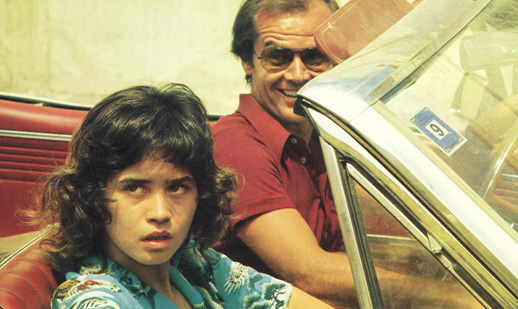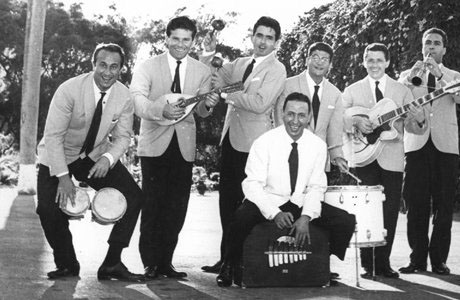Part 11 – The Films of Michelangelo Antonioni
The Italian Tribune continues to offer our Italian cinema series featuring our favorite classics that we hope you will enjoy viewing at home this summer. As most of the films featured in this series are presented in the Italian language with English subtitles, we suggest viewing them with a study of the language in mind – it’s a great way to brush up on (or even to begin to learn) the romance language of our ancestors.
Most of the films on our list are available through On Demand, Netflix and Amazon.
One of the great Italian directors was Michelangelo Antonioni and we selected his films “Cronaca di un Amore,” “L’Avventura” and “The Passenger” as recommendations for your viewing pleasure.
Antonioni is regarded as one of the most influential Italian directors in film aesthetics. Part of a revolutionary era in filmmaking, Antonioni chose to focus on vague characters instead of plot and clarity, in fact, it is his lack of explanations and confusing stories that he is best known for. Others have tried to emulate his style and have fallen flat. Antonioni’s films run along the finest of edges, seemingly ready to fall apart at almost any point, yet woven together in a compelling series of images that is pure mastery.
Antonioni was born in 1912 in Ferrara, Italy to a wealthy family. While attending the University of Bologna, Antonioni began writing and directing stories. A pioneer of theater groups at the university, Antonioni began to make his own films.
During his 20s, Antonioni struggled with filmmaking, as he was continuously sidetracked by other professions. It was not until after World War II that Antonioni began making documentaries. His first film, Cronaca di un Amore (Chronicle of a Love) was released in 1950. Despite its neorealist background, the story and image of the film did not comply with Italian neorealist standards.
The film tells the story of a love triangle between a married couple and an estranged lover. Lucia Bose stars as Paola, whose past is being investigated by her jealous husband Enrico, played by Ferdinando Sarmi. When Paola runs into her former lover Guido, played by Massimo Girotti, the couple plots to kill Enrico, which leads to a complicated end. This film set the stage for Antonioni’s later films and won several awards.
Following his divorce from his first wife in 1954, Antonioni fell into depression for many years. It was during his period that he produced two grim films, Le Amiche (The Girlfriends) and Il Grido (The Outcry). While filming Il Grido, Antonioni met Monica Vitti, an actress who he would work with on many future films.
Vitti starred alongside Gabriele Ferzetti in Antonioni’s 1960 film L’Avventura (The Adventure). The film is a trademark of Antonioni’s work in which the central theme of the film is left unresolved and the focus turns to a seemingly minor detail.
In L’Avventura, a group of rich couples from Rome take a boat trip to a volcanic island off the coast of Sicily. One of the young women named Anna, played by Lea Massari, vanishes without a trace. After an unsuccessful search, the others adjust to her disappearance and go back to living their lives. This leads Anna’s husband Sandro (Ferzetti) to fall in love with her best friend Claudia (Vitti). The film shows how people learn to cope with themselves and each other in the heart of tragedy.
L’Avventura is the first installment of a trilogy that includes La Notte (The Night) in 1961 and L’eclisse (The Eclipse) in 1962. Vitti starred in both films that dwell on the same themes as L’Avventura.
Antonioni’s most successful and well-known film was Blowup, from 1966; it was his first English language film. The film stars David Hemmings as a professional photographer in London. One day he takes photos of two lovers in the park. The woman, played by Vanessa Redgrave follows the photographer to his studio to try to get his film. This inspires the photographer to investigate the film, and as he enlarges the photos, a dead body appears to be in the background. However, when the photographer finds the body he does not have his camera and when he returns to the scene the body is gone. The culmination of the suspenseful, surprising film focuses on reality and how it is perceived. Antonioni was nominated for two Academy Awards for Blowup, for Best Director and Best Original Screenplay.
Following almost a decade of critical disdain, Antonioni returned to the mainstream with his 1975 English film The Passenger starring Jack Nicholson.
Nicholson plays David Locke, a television journalist in Africa who is searching for rebels. When his mission fails Locke switches identities with a dead man, Mr. Robertson. It is only when he is busy keeping Robertson’s appointments in Europe that Locke learns that Robertson is a wanted gunrunner for the rebels. The criminal situation leads to a series of high-speed and cross-country chases which include run-ins with local police. The film looks at the idea of identity and mankind’s desire to escape oneself.
Although Antonioni continued to produce more films and documentaries after suffering a near fatal stroke, his work was limited by his disabilities. He passed away in 2007. Antonioni is arguably the most influential director of the postwar era and was honored by the National Gallery of Art in Washington, D.C. on the occasion of the 100th anniversary of his birth in 2012.





